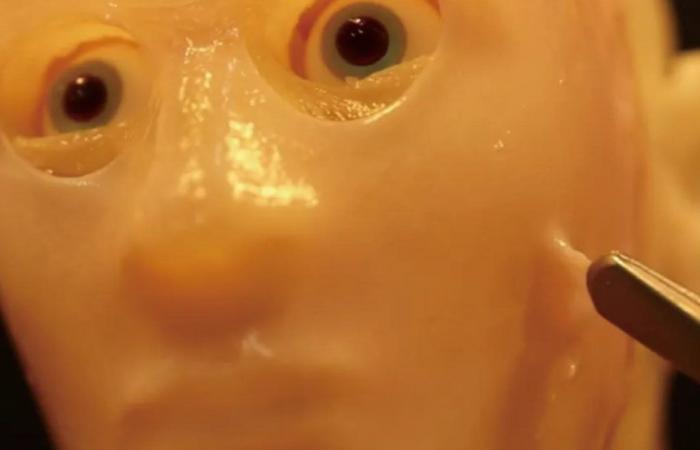In a research paper spotted by the BBC, Japanese researchers have managed to attaching lab-grown human skin to a robot. A slightly disturbing but very interesting experiment that could advance robotics and even orthopedic surgery.
Fleeing the Uncanny Valley
Our brains are conditioned to instantly recognize a human face and the characteristics that define it. He is particularly gifted at recognizing a host of details that we do not consciously perceive, such as the tiny asymmetry that we find in the structure of all faces and expressions. On the other hand, as soon as we remove these subtle markers of our humanity, the deception becomes absolutely glaring, without us being able to point out an obvious deformity. This phenomenon is called uncanny valley.
Researchers have been working on this topic since the early days of advanced robotics; as soon as the first androids appeared, some immediately thought that skin could allow robots to cross the uncanny valley to reach a level of near-perfect realism.
It is clear that things did not always go well. Currently, there is still no robot capable of creating illusions. It is indeed a problem that has many facets: to obtain a perfectly realistic robot, we will undoubtedly have to wait for great advances in animation technologies, structural engineering and materials science. But Japanese researchers believe they have taken a big step in this direction.
Skin that is more real than nature
The researchers began by growing artificial skin made up of real living cells. The result is relatively convincing. It has irregularities realistic as well as a transluminescence quite close to human skin, at least compared to a material like latex.
But the realism of the skin itself is not enough to create a convincing humanoid. Other researchers have already had bitter experience of this. This is not the first time that this idea of using real skin cells has been used, but so far it has always run into a problem of adhesion. Indeed, human skin is attached to the underlying structures by ligamentous tissue; without these essential links, the skin cannot follow the movements of the face, and the result is straight out of a horror movie.
To overcome these obstacles, the Japanese researchers relied on both a chemical and structural approach. The structure of their robot is in fact studded with small perforations that the researchers filled with different elements from the extracellular matrix, such as collagen and elastin — two major components of ligaments. Their artificial skin can therefore adhere perfectly to the robot’s “skeleton”. In addition, this anchoring also prevents it from resorbing so that it can maintain its appearance over time.
Subscribe to Journal du Geek
Another interesting point: this artificial skin also resembles the real thing in terms of functionality. In theory, such an organic covering could regenerate itself autonomously to a certain extent. However, since this was not the main objective of the study, the researchers do not seem to have measured the speed at which their fake skin can self-repair.
Larger-than-life androids are not for tomorrow
On the other hand, this work still has serious limitations. Even if it is already quite realistic, their synthetic material does not yet come close to human skin in terms of resistance and elasticity. Additionally, it lacks all of the nerve structures associated with the perception of pressure and temperature, as well as all of the circulatory structures to deliver the nutrients that would allow this skin to continually regenerate.
Furthermore, to achieve a perfect illusion, working on the skin will not be enough. It will also be necessary to reconstruct the complex muscular structures that animate them. According to the lead author of the study quoted by the BBC, this will necessarily involve the integration of very sophisticated sensors and actuators.
Concrete potential
But before sounding the death knell for the uncanny valley, this work could have quite concrete repercussions in areas such as cosmetic or even the orthopedic surgery. If we can recreate fully functional skin and extracellular matrix, including at the nerve level, this is excellent news for patients who suffer from facial paralysis or injuries such as severe burns.
The text of the study is available here.
To not miss any news on the Journal du Geek, subscribe on Google News. And if you love us, we have a newsletter every morning.






